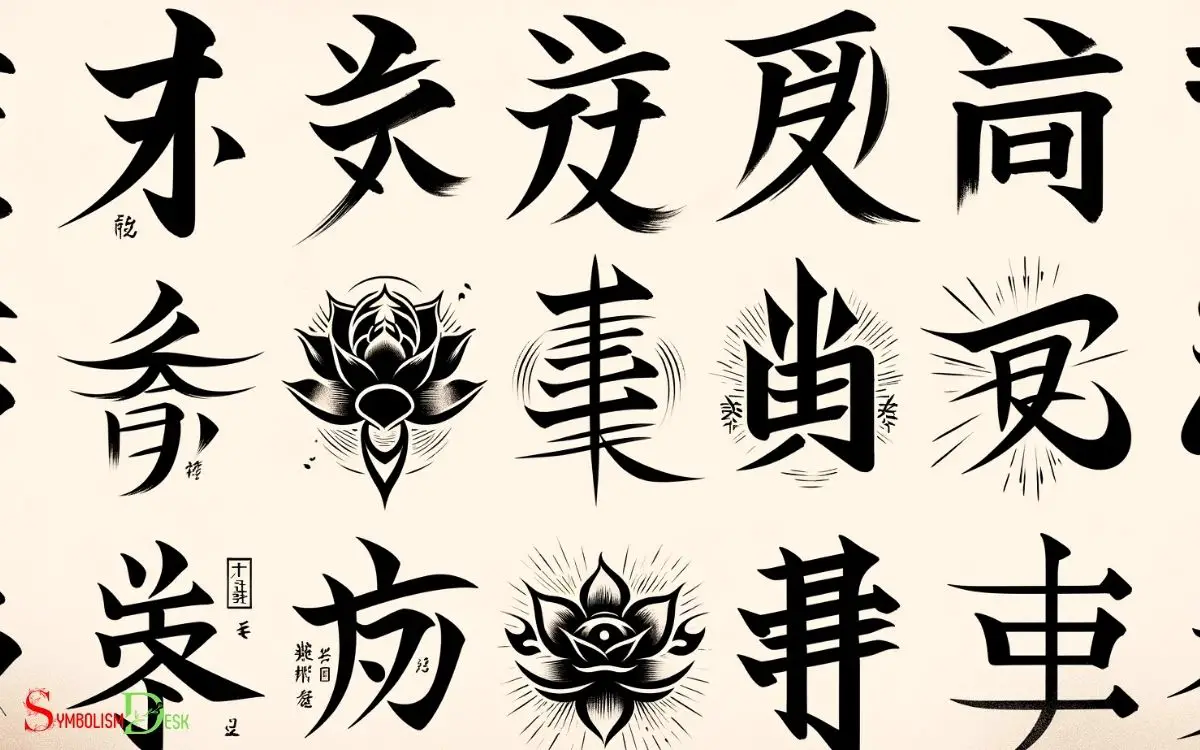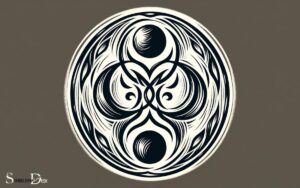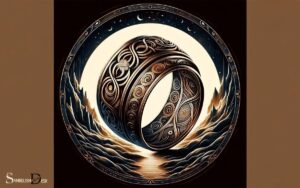Kanji Symbol Tattoos and Meanings: Explain!
Kanji symbol tattoos are revered for their deep cultural roots and rich meanings, varying from strength and wisdom to peace and beauty.
It is essential for individuals considering a kanji tattoo to understand the symbol’s true meaning, origins, and nuances in calligraphy to ensure the tattoo accurately reflects their intended message.
Kanji are logographic characters used in the Japanese writing system, originally adapted from Chinese characters. They encapsulate a wide array of meanings and concepts in single or combined forms.
Some important aspects include:
- Origins: Kanji came to Japan from China around the 5th century.
- Cultural Significance: Each kanji holds a specific meaning, and when used in tattoos, they can convey personal beliefs, aspirations, or traits.
- Popular Meanings: Common kanji tattoos include symbols for love (愛), strength (強), harmony (和), and happiness (幸).
- Considerations: It’s crucial to research and consult with a knowledgeable artist to ensure proper representation and avoid misinterpretations.
Choose a kanji tattoo that resonates with your spirit, but always verify its meaning with a native speaker or expert to honor the symbol’s integrity.

Key Takeaway
Origins of Kanji Symbols
While kanji symbols are widely known for their use in tattoos, it’s important to understand their origins in the context of Japanese writing and culture. Kanji, which originated from Chinese characters, were introduced to Japan around the 5th century.
These symbols are logographic, representing entire words or ideas rather than individual sounds. Over time, the Japanese adapted kanji to fit their own language, creating a unique system that combines kanji with hiragana and katakana.
The complexity of kanji lies in the multiple meanings some symbols can convey, known as ‘readings,’ as well as the stroke order used to write them.
Understanding the origins of kanji symbols provides insight into their significance and helps individuals appreciate the depth of meaning behind each character when considering them for tattoos.
Cultural Significance and Usage
Cultural significance and usage of kanji symbols in tattoos reflect the enduring influence of Japanese language and culture on the global tattoo artistry scene.
Kanji symbols are often chosen for their aesthetic appeal and deep meanings, embodying concepts such as strength, love, and resilience.
Below is a table showcasing some common kanji symbols and their meanings:
| Kanji Symbol | Meaning |
|---|---|
| 愛 | Love |
| 力 | Strength |
| 幸福 | Happiness |
| 和平 | Peace |
The utilization of kanji symbols in tattoos serves as a form of cultural exchange, allowing individuals from diverse backgrounds to embrace and express the beauty of the Japanese language.
This also underscores the universal appeal of these symbols, transcending geographical and linguistic barriers.
Popular Kanji Symbol Meanings
Many people are drawn to Kanji symbol tattoos for their deep and meaningful representations.
In this section, the article will explore popular Kanji symbol meanings, including love, strength, and beauty.
It will also touch on the cultural significance of these symbols, cautioning readers about potential misinterpretations.
Love, Strength, Beauty
The Japanese kanji symbols for love, strength, and beauty hold significant meaning for those considering them as tattoo designs.
The kanji symbol for love, 愛 (ai), represents deep affection and emotional attachment. It’s often chosen to express love for family, friends, or a romantic partner.
The kanji symbol for strength, 力 (chikara), signifies inner and physical strength, resilience, and power. Many individuals choose this symbol to represent their ability to overcome challenges and adversity.
The kanji symbol for beauty, 美 (bi), embodies aesthetic appeal, elegance, and grace. It’s commonly selected to celebrate inner and outer beauty, as well as appreciation for the beauty in the world.
These kanji symbols serve as powerful expressions of personal values and beliefs, making them popular choices for tattoos.
Cultural Significance Inks
Continuing from the previous subtopic, one of the most popular kanji symbol meanings is ‘peace’, represented by the character 平 (hei), which conveys harmony and tranquility.
Another widely chosen symbol is ‘strength’, which is depicted by the character 力 (chikara). This symbolizes inner strength and power.
‘Love’ is also a highly sought-after kanji symbol, symbolized by the character 愛 (ai), representing affection and care.
Furthermore, ‘beauty’ is often inked using the character 美 (bi), conveying elegance and aesthetics.
‘Courage’ is another significant symbol, characterized by 勇 (yuu), which signifies bravery and valor.
These kanji symbol tattoos hold deep cultural significance, often embodying values that resonate with individuals.
It’s essential for anyone considering such tattoos to understand the meanings behind these symbols and their cultural connotations. It’s essential for anyone considering such tattoos to understand the meanings behind these symbols and their cultural connotations. For instance, Korean tattoo symbols and meanings often carry deep significance, reflecting themes like love, resilience, or connection to nature and heritage. Taking the time to research and appreciate these nuances not only shows respect for their origins but also ensures that the chosen design resonates personally.
Misinterpretation and Caution
Caution should be exercised when selecting popular kanji symbol meanings for tattoos, as misinterpretations can lead to unintended significance.
For example, the kanji symbol for “strength” may be misinterpreted as “power” or “force” due to its nuanced meanings. Similarly, the symbol for “love” could be misconstrued as “affection” or “passion” based on different cultural contexts.
To avoid such misinterpretations, thorough research and consultation with a native speaker or a reputable source are essential.
Below is a table featuring popular kanji symbol meanings and their potential misinterpretations to highlight the importance of caution in selecting kanji symbols for tattoos.
| Kanji Symbol | Intended Meaning | Potential Misinterpretation |
|---|---|---|
| Strength | Inner power | Force |
| Love | Deep affection | Passion |
| Peace | Harmony | Tranquility |
| Courage | Bravery | Recklessness |
Considerations Before Getting a Kanji Tattoo
Before getting a Kanji tattoo, it’s crucial to thoroughly research the accurate meaning of the symbol and understand its cultural significance.
Additionally, verifying the correct character usage is essential to ensure the tattoo’s authenticity and prevent any unintended meanings.
Research Symbol’s Accurate Meaning
One essential step before getting a Kanji tattoo is to thoroughly research the accurate meaning of the symbol to ensure it aligns with the intended message or symbolism.
When considering a Kanji symbol for a tattoo, individuals should consider the following:
- Multiple Meanings: Kanji symbols often have multiple meanings and can be interpreted differently based on context. It’s important to consider all possible meanings to ensure the chosen symbol accurately reflects the intended message.
- Consulting Native Speakers: Seeking guidance from native speakers or individuals well-versed in Kanji can provide valuable insights into the nuances and cultural significance of the symbol.
- Cross-Referencing Sources: Cross-referencing the symbol’s meaning across reputable sources, such as language dictionaries or scholarly works, can help verify its accuracy and avoid potential misinterpretations.
Understand Cultural Significance
It is important for individuals considering a Kanji tattoo to understand the cultural significance of the symbol before getting inked. Kanji symbols are deeply rooted in Japanese culture and hold specific meanings that may not always align with Western interpretations.
Before getting a Kanji tattoo, it’s crucial to research and comprehend the historical and cultural context of the symbol to ensure that it’s used respectfully and appropriately.
Understanding the nuances of Kanji symbols can help individuals avoid inadvertently conveying a message that’s disrespectful or inappropriate.
Additionally, gaining insight into the cultural significance of the chosen Kanji symbol can enhance the personal connection to the tattoo and foster a deeper appreciation for its meaning.
Taking the time to understand the cultural significance demonstrates a respect for the origins and traditions associated with Kanji symbols.
Verify Correct Character Usage
Prior to getting a Kanji tattoo, individuals should ensure the correct character usage by consulting with a knowledgeable and reputable source familiar with the nuances of Kanji symbols.
It’s crucial to verify the accuracy of the intended Kanji symbol to avoid any potential misunderstandings or embarrassing mistakes.
Here are three important considerations before getting a Kanji tattoo:
- Consult a Native Speaker or Expert: Seek guidance from a native Japanese speaker or a reputable expert in Kanji symbols to ensure the correct meaning and cultural significance of the chosen Kanji.
- Double-Check the Symbol: Verify the accuracy of the Kanji symbol by cross-referencing it with multiple credible sources, such as dictionaries or reputable online resources.
- Understand the Context: Gain a comprehensive understanding of the cultural and historical context of the Kanji symbol to ensure it aligns with the intended meaning and personal significance.
Placement and Design Options
When considering placement and design options for Kanji symbol tattoos, individuals should carefully select a location on the body that reflects their personal preferences and significance of the chosen symbol.
The placement of Kanji tattoos can vary greatly depending on individual preferences. Some may opt for small Kanji symbols on the wrist, behind the ear, or on the ankle for a discreet look.
Others may choose larger designs on the upper arm, back, or chest for a more prominent display.
The design options for Kanji symbol tattoos are diverse, ranging from simple, single-character designs to more elaborate compositions incorporating multiple characters, symbols, or other elements such as flowers or animals.
It’s crucial for individuals to work closely with a skilled tattoo artist to ensure that the chosen design and placement align with their vision and intentions.
Understanding Kanji Symbol Calligraphy
The understanding of Kanji symbol calligraphy plays a crucial role in ensuring the accurate representation and interpretation of these symbols in tattoo designs and their associated meanings.
When delving into the world of Kanji symbol calligraphy, individuals should consider the following:
- Stroke Order: Each Kanji character has a specific stroke order that must be followed to maintain its authenticity and aesthetic appeal.
- Balance and Proportion: The balance and proportion of the characters are essential in creating harmonious and visually pleasing tattoo designs.
- Brush Technique: The brush technique used in calligraphy greatly influences the style and appearance of the Kanji symbols.
Understanding these aspects of Kanji symbol calligraphy is vital for creating meaningful and visually striking Kanji symbol tattoos.
Now, let’s explore the essential aspects of ‘kanji symbol tattoo care and maintenance’.
Kanji Symbol Tattoo Care and Maintenance
Understanding the intricate art of Kanji symbol calligraphy informs the proper care and maintenance required for Kanji symbol tattoos, ensuring their longevity and visual integrity.
After getting a Kanji symbol tattoo, it’s crucial to follow specific care instructions to preserve the ink and lines.
Firstly, it’s essential to keep the tattoo clean and moisturized. Regularly washing the tattoo with a mild, fragrance-free soap and applying a thin layer of unscented, alcohol-free lotion can prevent drying and maintain the tattoo’s vibrancy.
Additionally, protecting the tattoo from prolonged sun exposure is vital to prevent fading. When going out in the sun, it’s recommended to use a high-SPF sunscreen and cover the tattoo with clothing.
Lastly, it’s advisable to avoid soaking the tattoo in water, such as swimming or prolonged baths, until it’s fully healed to prevent ink discoloration or fading.
Conclusion
kanji symbol tattoos offer a unique way to express meaning and significance through art. Just like a delicate brushstroke on a blank canvas, these symbols can tell a story or represent a personal journey.
With careful consideration and understanding of their cultural and linguistic nuances, individuals can create a beautiful and meaningful kanji tattoo that resonates with them for years to come.






